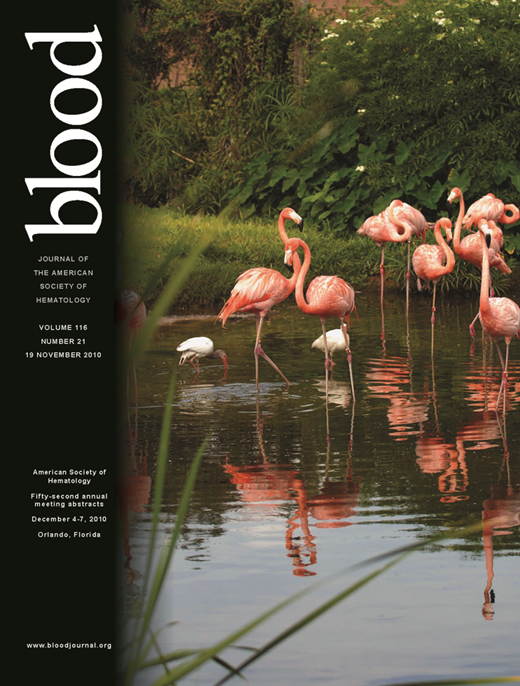Abstract
Abstract 2461
Fludarabine, rituximab, and cyclophosphamide combinations have shown high CR rates in CLL, but concerns remain about both short and long term toxicity. Lenalidomide has emerged as a potential alternative addition to the fludarabine/rituximab backbone that may increase anti-tumor activity. The purpose of this Phase I/II study was to determine optimal lenalidomide dosing and to evaluate its potential benefits when used in combination with fludarabine/rituximab.
Eligible patients (pts) had untreated Rai stage III/IV or symptomatic stage 0-II B cell CLL with no CNS involvement, ECOG PS 0–2, and adequate organ function. The Phase I portion of this trial (n=19) explored fixed doses of fludarabine (25mg/m2/IV on days 1, 2, and 3 every 28-day cycle) and rituximab (375mg/m2/IV in divided dose days 1 and 2 cycle 1, followed by 500mg/m2/IV day 1 cycles 2–6) while receiving one of two dose levels (DLs) of lenalidomide. Pts on DL1 received 2.5mg PO on days 8–28 of cycles 1–6; those on DL2 received 2.5mg PO on days 8–28 of cycle 1 and 5.0mg on days 8–28 of cycles 2–6. Tumor lysis syndrome prophylaxis was administered to all pts throughout the first 2 cycles (allopurinol, 300mg PO daily). Disease assessment (NCI WG Guidelines) occurred post-cycle 3 during active treatment, 2 months after completion of the last treatment cycle (≤6 cycles), and every 6 months in follow-up until disease progression.
Between 2/2008 and 5/2010, 28 pts were enrolled; the first 26 are included in this analysis. Pts were all untreated, and 64% male with median age 66.5 yrs (range: 48–82 yrs) and Rai stage 0/I/II/III/IV of 2/10/7/4/3. For the Phase I portion of the trial, the original lenalidomide dosing schedule specified that treatment begin on day 1 concurrently with fludarabine/rituximab, continuing for 21 days. Of the first 4 pts enrolled, 2 experienced persistent grade (g) 3 rash and/or dose-limiting toxicity (DLT), including g4 febrile neutropenia. Only 1 pt completed all 6 cycles of therapy but still 3 achieved PR; 1 came off study prior to disease evaluation (DLT). Due to concerns about toxicity in these first 4 pts, the protocol was amended to delay lenalidomide until days 8–28. Results for DL1 pts (n=6) from the Phase I portion of the amended protocol are as follows: 5 pts completed 6 cycles of therapy and achieved an objective response rate (ORR) of 83% (CR, 4; PR, 1); the remaining pt had SD. Median time-to-CR was 34.0 weeks (range 32.4–35.4). Of these 6 pts, the most common DL1 g3/4 toxicities included neutropenia (4), leukopenia (4), and rash (1); 1 pt was hospitalized for g3 upper respiratory infection (possibly-related). The maximum tolerated dose of lenalidomide (5.0mg, DL2) is currently being studied within the Phase II portion of this study. Currently, the findings for DL2 (Phases I/II pooled, n=16) are as follows: 5 pts were unevaluable (2 too early for assessment; 3 due to toxicity). Two pts achieved CR; 5 pts are PR, 2 of which are still currently receiving treatment. Four pts are stable, including 2 who are still on-study. In DL2 pts the most common g3/4 toxicities were neutropenia (10), leukopenia (5), fatigue (3), anorexia (2) and rash (2). Five pts on DL2 were hospitalized, including 1 with g3 tumor lysis syndrome while receiving prophylaxis (related) and another with g3 allergic reaction/hypersensitivity (possibly-related); 1 pt later expired from g5 diarrhea (possibly-related).
The activity of lenalidomide, when added to fludarabine/rituximab, appears promising, despite notable toxicity. The dosing schedule of lenalidomide in combination with fludarabine/rituximab appears to influence the overall toxicity of the three-drug regimen, as evidenced by the improvement in tolerability with sequential dosing. Phase II study is ongoing which will further characterize the toxicity and efficacy of this regimen in pts with CLL.
Flinn: Celgene: Research Funding; Genentech: Research Funding. Off Label Use: This study uses lenalidomide off-label, in combination with fludarabine/rituximab, as an investigational treatment for patients with chronic lymphocytic leukemia. Cooper: Bristol-Myers Squibb: Consultancy.
Author notes
Asterisk with author names denotes non-ASH members.

